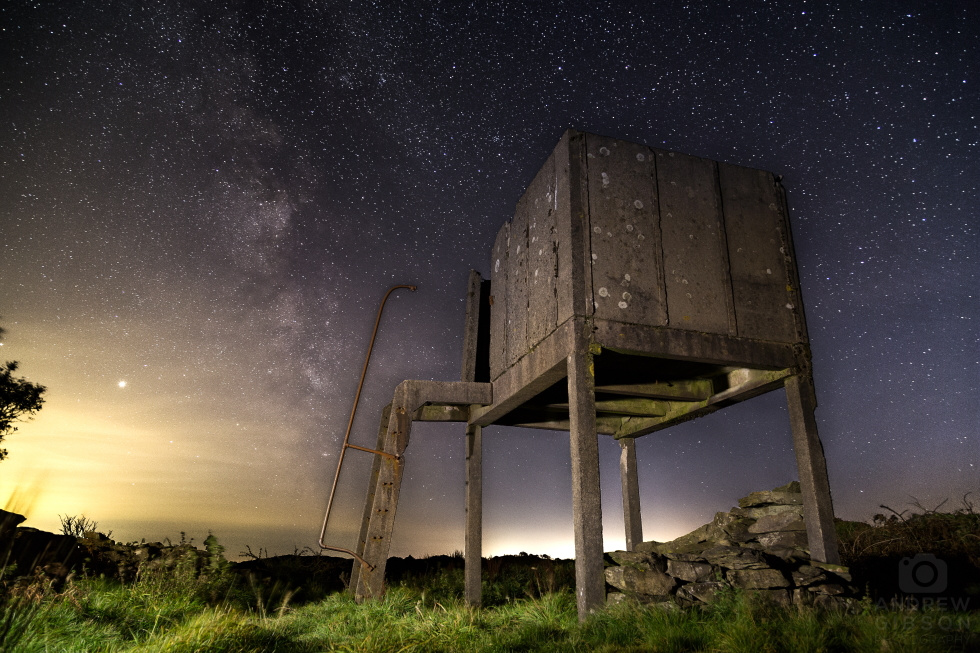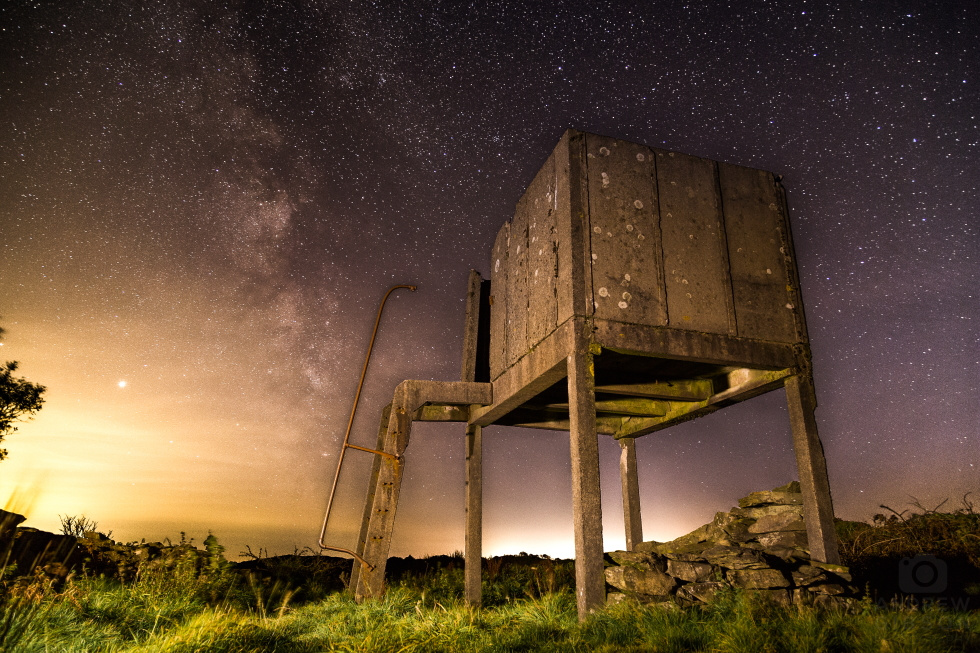I’ve wanted to try some Milky Way photography for a while now and never quite managed to line up the right conditions with my own availability, or indeed found a ‘subject’ to sit in the frame as I believe these things need. This week though the Milky Way core season was drawing to a close in the Northern Hemisphere, there was a new moon, and the skies were forecast to be clear. So I finally began to put a plan together…
The subject I’d located was something else I’d wanted to see for a while – a relatively rare relic of the Cold War in the shape of an ‘Orlit B’ ROC Post. These pre-cast concrete structures were installed in the early 1950s and would have stationed the Royal Observer Corps in the event of a nuclear attack on the UK. Of course, with its wooden roof it would have offered negligible protection had the bomb dropped nearby and within a couple of years they were declared obsolete, a new network of over 1500 underground shelters built up and down the country instead. I knew that if I could light it up from the front it would offer something of substance against the starry backdrop, perfect for the composition I had in mind.
I did invite Dave to join me but he wasn’t free, and to be honest I almost didn’t bother going on my own, but in the end as sunset approached last night I found myself on the road to Bigland Barrow in South Lakeland…
Having negotiated with a herd of cows for access to the dirt track that leads up the hill, I was in-situ just after 8pm; 45 minutes after the sun had set and still with enough dusky light available to climb into the structure for a quick inspection and then set my camera up on the ground nearby. Darkness quickly enveloped the scene, but it took until 9pm until it was properly dark enough to shoot this image – and as you can see from the result there was still significant light pollution emanating from the direction of Ulverston.
The Milky Way sets early at this time of year and was already low on the horizon, so the balancing act required was more complicated by its position in the sky: Not so early that there’s still too much ambient light, but not so late that the core had disappeared out of the bottom of the frame. I actually rather like the yellow glow, chasing the Milky Way core across the scene, but in any case I’d have had to wait until next season before I could have another attempt at it had I not gone out this weekend.
The foreground was lit using a torch, with orange gel to warm up the harsh LED light, but as these are so technically complicated the final image is actually made up of ten sky shots (f4, 15s, ISO6400), stacked, and then another three of the foreground (f5.6, 10s, ISO500) with various angles of light to paint the structure. All the components were then arranged in post-processing.
Turning to leave I realised just how dark it was, but up on the Barrow the 360 degree vista offered a view packed with stars in all directions, so still and serene, and well worth the trip out in its own right.
The light pollution in the resulting image may look like there’s been a nuclear explosion further along the peninsula, but thankfully that was never a reality.
I actually processed this twice with different white balances, so here’s the bluer version. See which one you prefer…

Now I know roughly what I’m doing it’s definitely something I’d like to do more of in the future, so while it’s by no means the best astro shot you’ll ever see, for a first attempt I’m rather pleased with it. Plus in these strange times it’s just nice to enjoy the liberty of being able to go outdoors, do a bit of adventuring and indulge in some creative photography. You never know when that might be curtailed again…
Thanks for stopping by.

Comments
Glen Adair
Andrew
Denise
Andrew
MG.
Andrew
Rosemary
Andrew